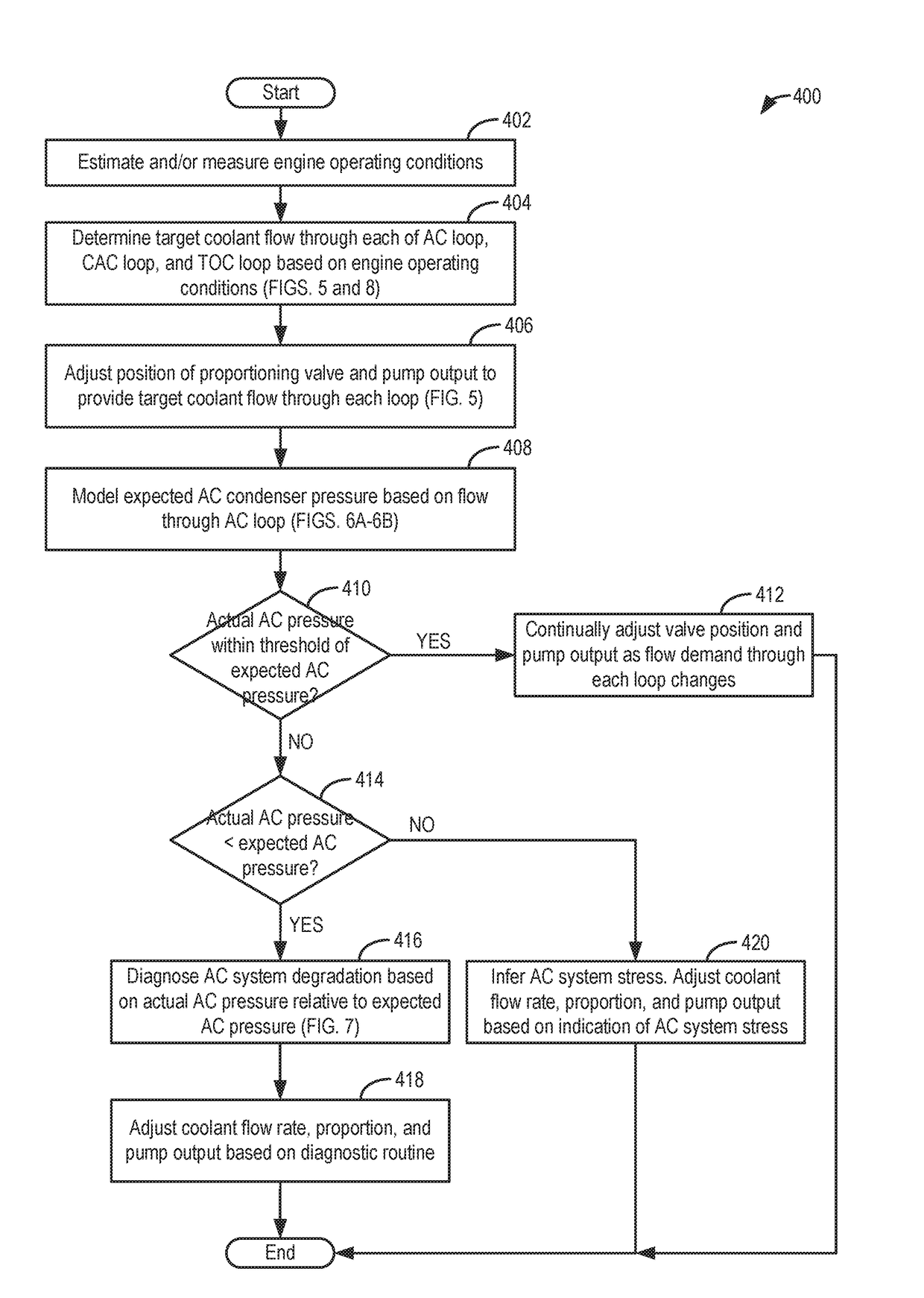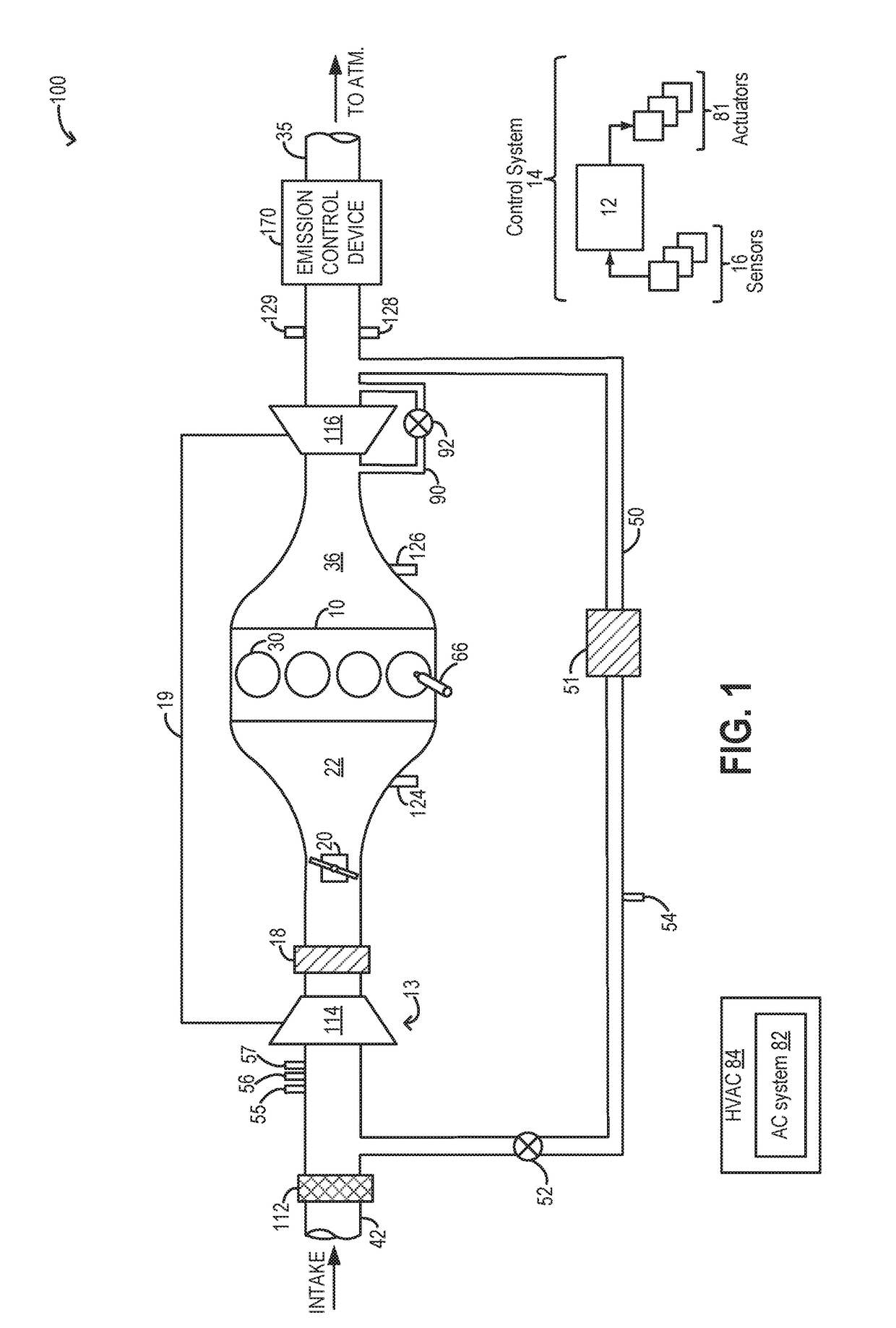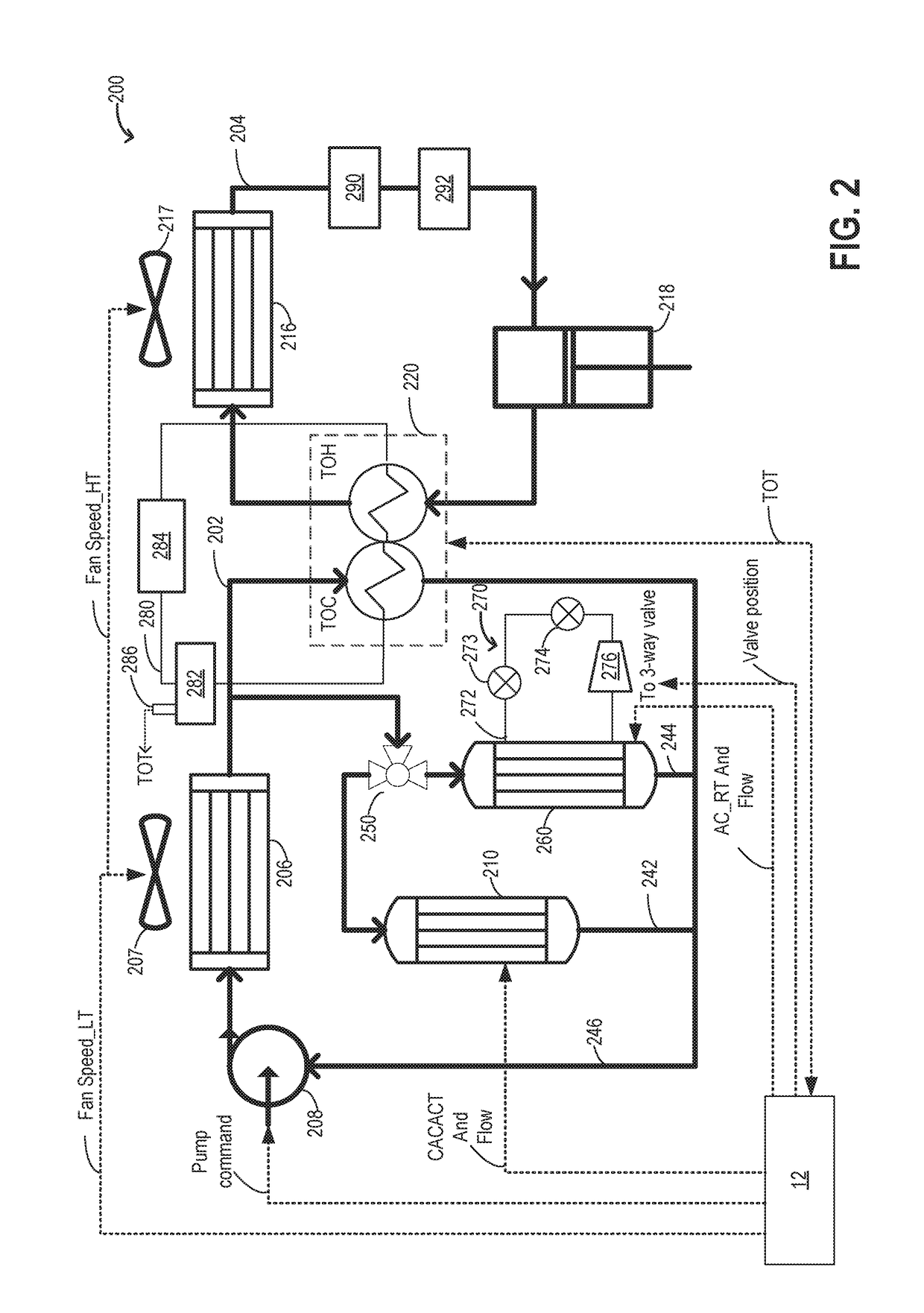Methods and systems for coolant system
a technology of coolant system and method, applied in the direction of fluid gearing, machine/engine, fluid gearing, etc., can solve the problems of affecting affecting the reliability of the diagnosis, and the inability to provide adequate cabin cooling, etc., to achieve the effect of reducing the difficulty of refrigerant level, reducing the accuracy of the results, and reducing the time required
- Summary
- Abstract
- Description
- Claims
- Application Information
AI Technical Summary
Benefits of technology
Problems solved by technology
Method used
Image
Examples
Embodiment Construction
[0017]Methods and systems are provided for improving the performance of components cooled by an engine coolant system, such as the coolant system of FIG. 2 coupled to the engine system of FIG. 1. The coolant system may be operated in one of a plurality of operating states, the coolant system transitioned between the different states responsive to engine operating conditions and changes in cooling demand (as shown at FIG. 3). An engine controller may be configured to perform a control routine, such as the example routine of FIGS. 4-5, to coordinate adjustments to a coolant pump output and the position of a proportioning valve to vary a flow of coolant through the various components of the coolant system to meet cooling demand with reduced parasitic losses. For example, the controller may refer to a map, such as the example maps of FIGS. 6A-6B, to determine a pump output and a coolant flow rate where air conditioning performance is optimized. In addition, the controller may adjust the...
PUM
 Login to View More
Login to View More Abstract
Description
Claims
Application Information
 Login to View More
Login to View More - R&D
- Intellectual Property
- Life Sciences
- Materials
- Tech Scout
- Unparalleled Data Quality
- Higher Quality Content
- 60% Fewer Hallucinations
Browse by: Latest US Patents, China's latest patents, Technical Efficacy Thesaurus, Application Domain, Technology Topic, Popular Technical Reports.
© 2025 PatSnap. All rights reserved.Legal|Privacy policy|Modern Slavery Act Transparency Statement|Sitemap|About US| Contact US: help@patsnap.com



